
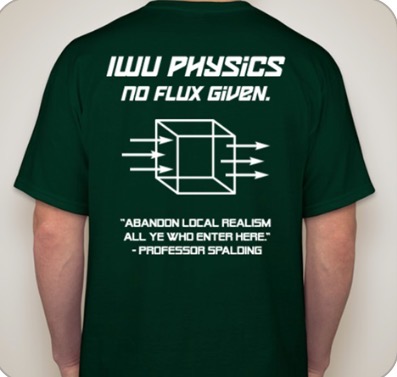


|
|
Gabe Spalding CNS room C006B Office Hours:
Monday: 2:00 - 2:50PM Wed. or Fri.: 2:00 - 3:50PM ...or by scheduling time via my public calendar ...or by posting (even anonymously, at any hour) to our Class Discussion Page on Piazza Public chats via BlueSky |
|
Week |
Reading Schedule |
Hands-on Grapplings |
Pen & Paper Exercises ("Questions & Problems") |
Computer Exercises | Links | ||||||||||
| 1 |
|
Read the Lab Grading Guidelines
In-class Demos = We can use an electroscope to explore induced charge, transfer of charge, division of charge, and the inverse square law. We can also show Einstein's photoelectric effect Lab 1: Come to lab having already written your responses to pre-lab questions in the Flux Concept Discovery Lab (developed by students in PHYS 301, as a gift to you) |
For your practice, Vol 2 Ch 5: 53, 54, 55, 57, 63, 78, 79 Homework due Jan 14 Any 3 of these: Vol 2 Ch 5: 48, 58, 60, 68, 90, 126, 92, 94, 96, 106, 122 (4 more of these will be due Jan 22) Visit the Physics Help Clinic! |
Pre-term =
Download Mathematica! Intro to Mathematica Slope & Derivative Constant Velocity Constant Accel End of Week: Explore Vector Fields |
Science moves forward as a large, shared conversation, so register NOW, for free access to Physics World Or, you might be interested by the use of high voltage for electrical special effects in movies |
||||||||||
|
2 |
|
Lab 2 = Introduction to Electrical Soldering In lab, you'll also have the opportunity to explore a leaf electroscope, which uses a suspended ultra-thin metal foil as an indicator. What Electrostatic Demonstrations do you propose? We use the word field to mean something that is a function of position. You can use phyphox for barometer readings, exploring atmospheric pressure as a field. To extend the field idea, you can set up a low-frequency acoustic standing wave and have folks walk around the room to find nodes and antinodes. You can use a Van de Graff generator to prompt further thinking about electric fields, explore field lines, and reinforce our discussions |
For your practice, Vol 2 Ch 5: 80, 82, 97, 101, 103, 105 Homework due Jan 22 4 more of these: Vol 2 Ch 5: 48, 58, 60, 68, 90, 126, 92, 94, 96, 106, 122 Visit the Physics Help Clinic! |
Explore Electrostatics, Visually |
(Related topics: doping of semiconductors, ion implantation, Bragg peak, proton therapy, ...) 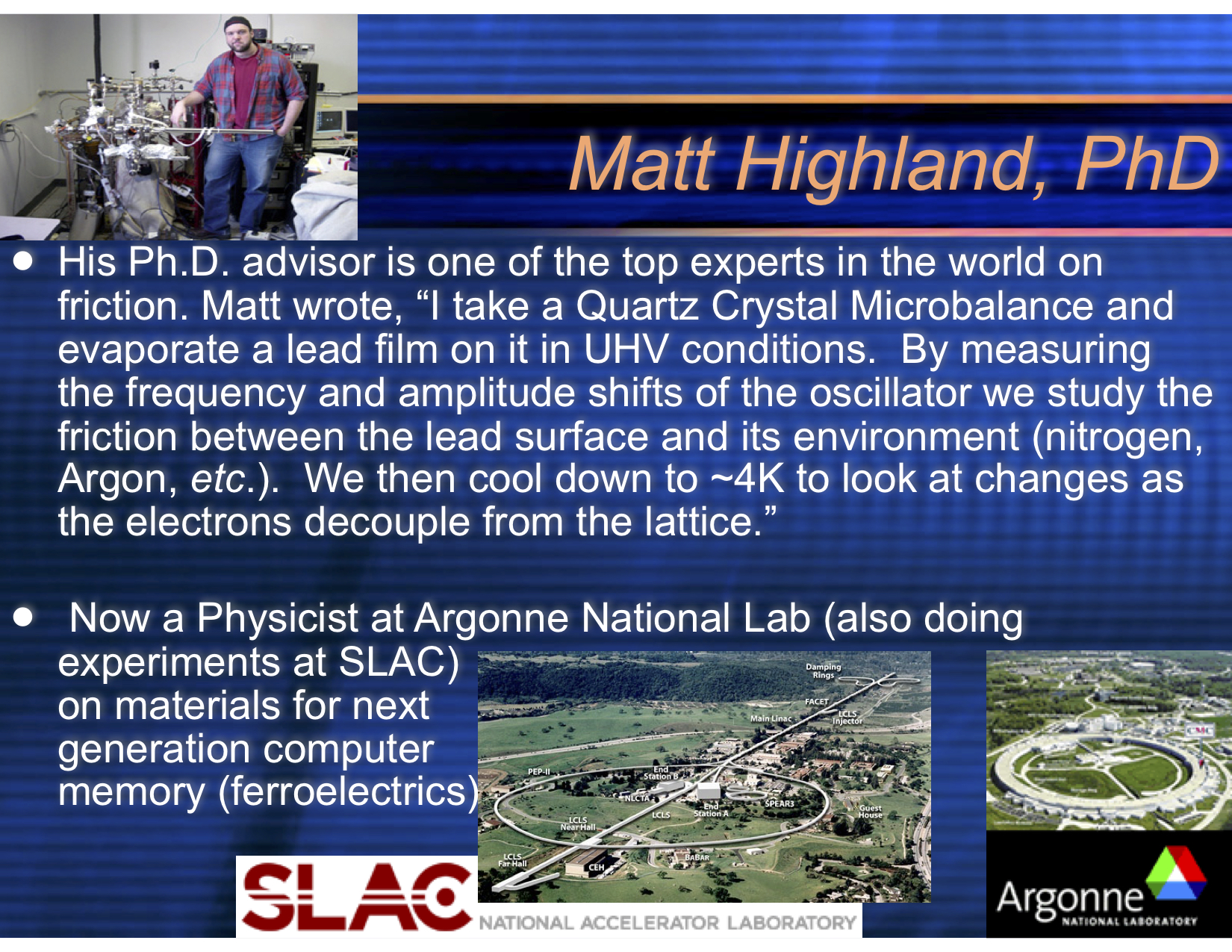
|
||||||||||
|
3 |
|
Lab 3 Required Pre-lab Video: Potential and Field using the iOLab Device Lab 3 Procedural to annotate A game to die for, called "Would it kill you to come to class on time?" (The answer is no, but coming late could, as the safety warnings come first!) On Wednesday (who's that day named after?), ... we'll look at a device invented by a Victorian researcher with the last name Oudin (notably similar to a name from Norse mythology, Odin or Woden). This is often mistaken for a hand-held Tesla Coil 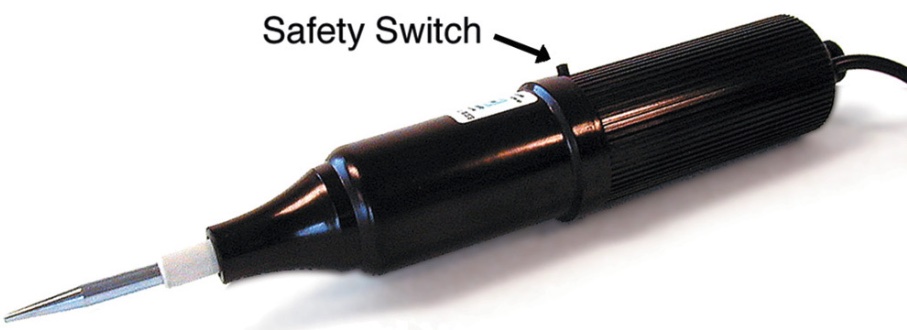 If we, say, charge Oudin's Wand to 15000 Volts, why do we only see an electrical strike when the separation between the tip and a grounded conductor is a few centimeters or less? What happens if you try to store more energy in a capacitor than it can handle? (Boomski!) Similar breakdown occurs with a Jacob's Ladder. We use the word voltage to mean Potential Energy per Charge. That is, when you push a lot of LIKE charges together, you have to do work: you are storing ENERGY in that configuration. Much like a drunk on a pedestal, it will tend to take any path available to lower its energy, so WATCH OUT! |
For your practice: Ch 6: 29, 30 Homework due Jan 26: Any 5 of these: Ch 6: 21, 23, 24, 26, 32, 35, 40 (Piazza discussion recommended) |
Mathematica is your friend: Try Simulating Electrostatics End of week: Try Simulating Electric Potential and Simulating Electric Fields |
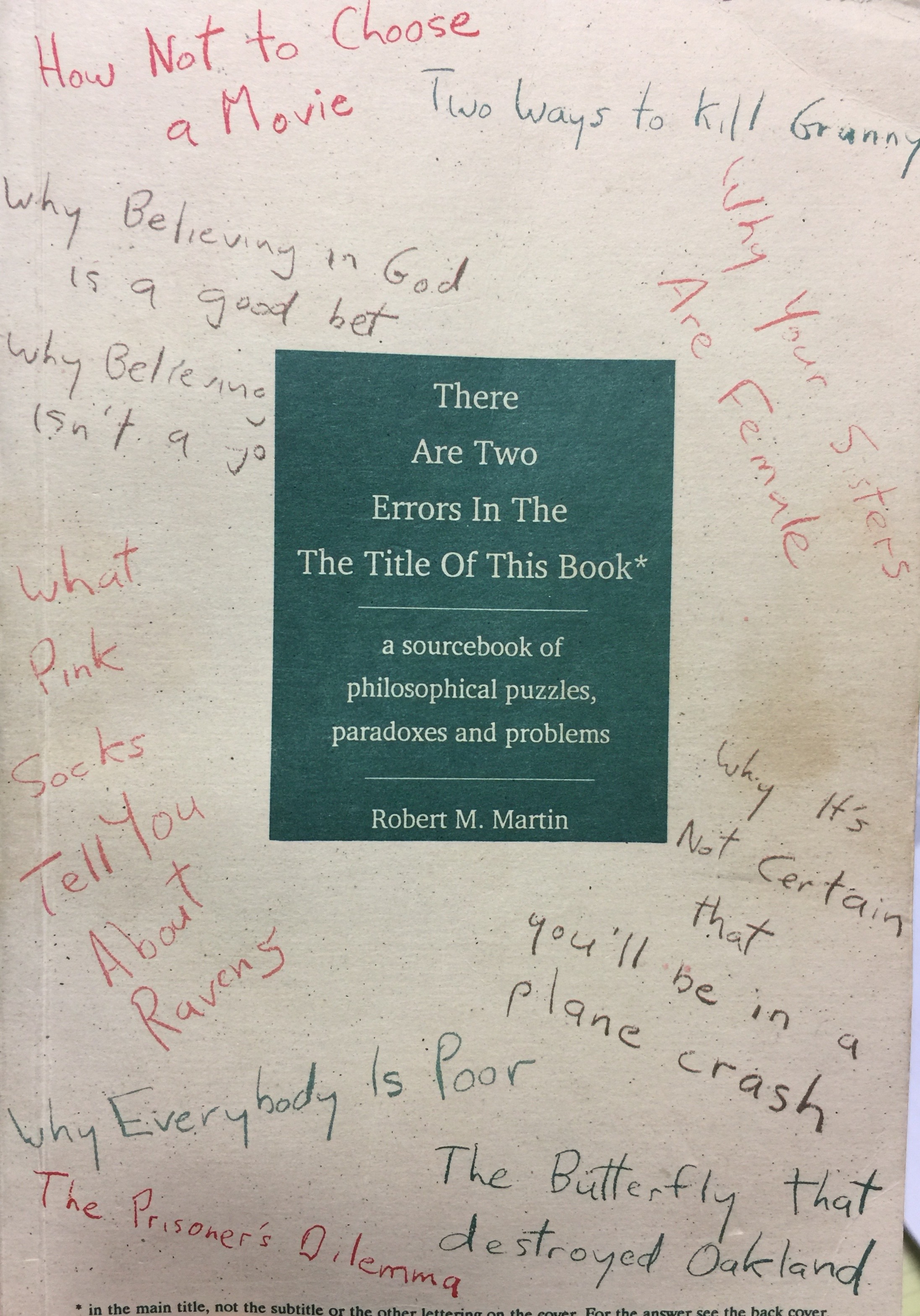
Philosophy Student become a Philosopher? ...begin by grappling with some questions: ONLY check the answers (below) after you've contributed your own thoughts! |
||||||||||
|
4 |
|
Lab 4 = Motion of charged particles in a uniform electric field: (using electrostatic deflection to measure the charge-to-mass ratio of an electron) We'll also explore Oscilloscopes Common meters do not measure charge or electric field directly; here, we introduce voltmeters and, for time-varying voltage signals, the oscilloscope. (Add a line to your résumé: basic test & measurement hardware) For professors of a certain age, Lissajous figures are just an excuse to play Pink Floyd music in class, ...and to use phrases like "commensurate" and "incommensurate" temporal periods ...and to argue that the golden ratio is the "most" irrational number, ...all of which suggests that you should be doodling in math class We can also demonstrate "Franklin's Balls," where pith balls suspended between metal plates act a bit like a doorbell, which continue even after turning off the power supply (as you've stored energy in a capacitor): you learn not to stick your tongues across such plates (as that's how communicable diseases are spread). |
Practice: Ch 7: 29, 34, 35, 36, 46, 50, 53 Homework due Jan 30: Any 5 of these: Ch 7: 54, 55, 58, 60, 70, 92, 101 (Piazza discussion can help to prepare you for Exam I) |
Background on Graphical Analysis
Push through our Igor Pro Tutorial Add a line to your résumé: Data Visualization & Analysis using Igor Pro (Printouts due at the end of this week's lab period) |
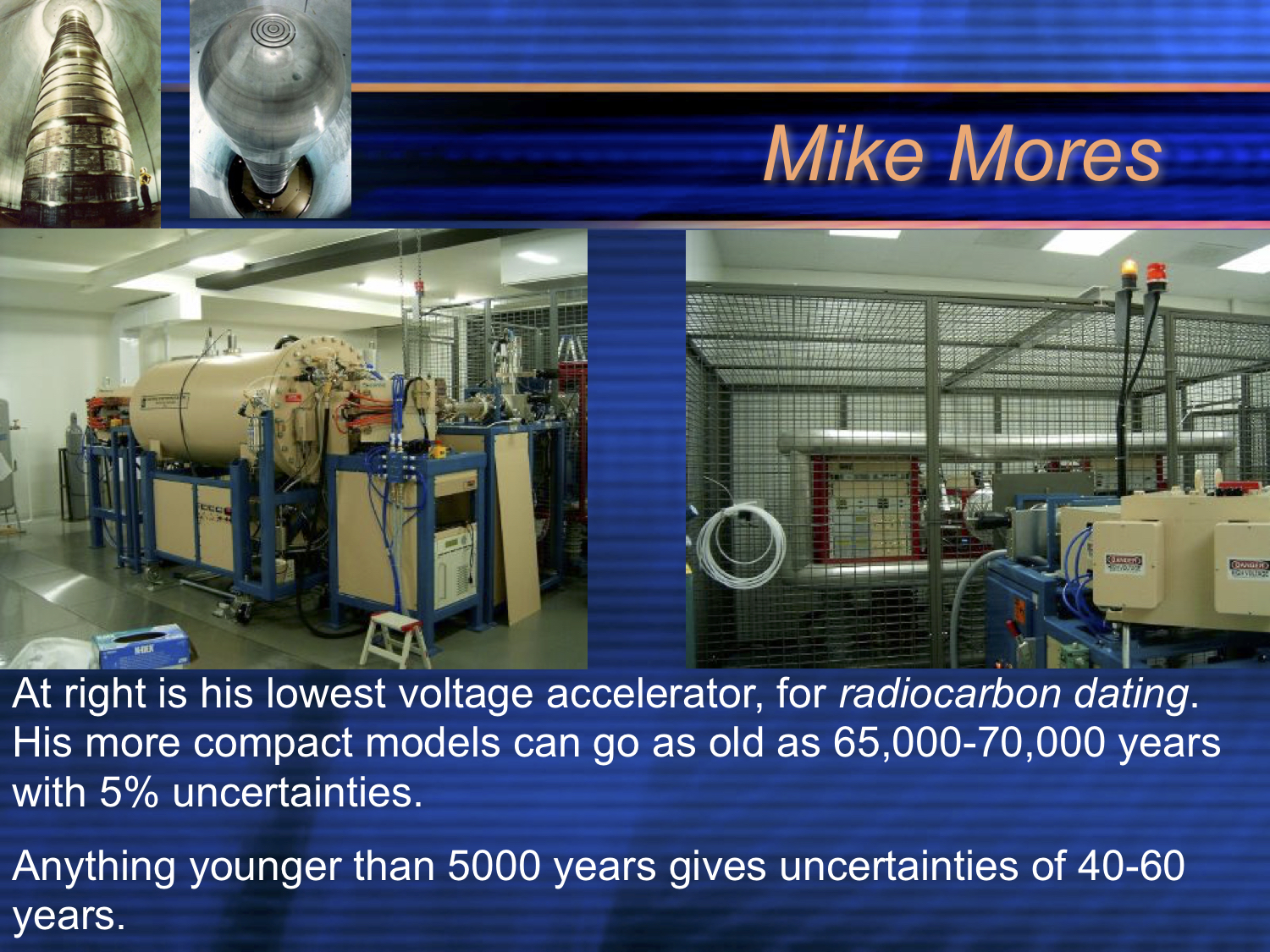
Their site claims that their accelerators utilize "the world's most durable high voltage charging system based on metal pellet charging chains" ...How do you think this approach might work? |
||||||||||
|
5 |
|
Lab 5 = A student posed this question
Import the procedural into OneNote and annotate in advance |
Homework due Feb 6: Any 2 of these For your practice: Ch 8: 31, 32, 79 Homework due Feb 10: Any 4 of these: Ch 8: 26, 30, 36, 40, 48, 51 (Piazza discussion recommended) |
Try using Mathematica for simulating RC circuits |
Share photos with me, that reflect your engagement, and I will add them to this display! Can you see yourself joining an IWU Physics and/or Engineering project? You'll get Extra Credit if, after conversation, you can write a one-paragraph plan! |
||||||||||
|
6 |
|
Lab 6 = Modeling the Action Potential of Neurons (Physics is an old word that means "nature", and we are interested in general principles that apply across an awesome range of situations!) Import the procedural into OneNote and annotate in advance Explore! Enter into conversation about joining an IWU Physics and/or Engineering project! You'll get Extra Credit if, after conversation, you can write a one-paragraph plan! |
For your practice: Ch 8: 31, 32, 79 Homework due Feb 10: Any 4 of these: Ch 8: 26, 30, 36, 40, 48, 51 For your practice: Ch 9: 22, 23, 37, 41, 43 Ch 10: 22, 35, 48, 79 Homework due Feb 14: Any 3 of these: Ch 9: 24, 27, 31, 46, 54, 56 *_AND_* any 3 of these: Ch 10: 23, 27, 69, 72, 77 (Piazza discussion recommended) |
Try using Mathematica for performing Circuit Analysis |

From the illumination used for the Statue of Liberty, to many major sports facilities, for every rare earth metal halide lamp you come across, a cut goes to the Anderson Physical Laboratories, founded by IWU Physics grad Dr. Scott Anderson, who helped fund this building. (Accordingly, CNS room C101 is named the Anderson Auditorium) Each year, we name an IWU Scott Anderson Scholar in Physics |
||||||||||
|
7 |
|
Too much power, and a resistor will BURN! Too much power, and a capacitor will EXPLODE! You’ve now seen that energy will be dissipated (as heat) in a resistor, but can be stored in building up the electric field in a capacitor, and — next — will learn that it can also be stored in building up a magnetic field in an electromagnet. Those three elements are the keys to the entire course! Our game will always be to follow the energy. At times, though, we can simplify complex problems by introducing effective system parameters (such as B, or L) Lab 7 = The Current Balance Import the procedural into OneNote and annotate in advance Troubleshooting is a skill we hope you will embrace |
For your practice: Ch 11: 11, 24, 25, 26, 32, 37, 39, 47 Homework due Feb 23: Any 5 of these: Ch 11: 27, 28, 43, 46, 57, 61, 68, 79 (You learn Physics by working on Physics, but you don't have to work alone: Piazza discussion recommended) |
Try using Mathematica for simulating Particles in Magnetic Fields Wolfram|Alpha Demos |
Key Videos: Principles of Einstein's Special Relativity
Magnetism is always a consequence of Einstein's Relativity: Only after watching the SERIES of videos above can you begin to appreciate why: |
||||||||||
|
8 |
|
This week, you'll need to set up a Zotero account Be sure you record your login credentials, as you'll need those for what we'll do in class! Article of Interest Log Readings Lab 8 = The Mass of the Electron (measured by deflection in a magnetic field) |
For your continued practice: Ch 11: 48, 92 Ch 12: 1, 2, 3, 6, 7, 19 Homework due Mar 2: Any 6 of these: Ch 12: 16, 18, 24, 30, 32, 34, 35 |
MIT Magnetostatic Visualizations |
It all comes back to fundamental principles: This week, you'll hear about our partnership with the U.S. Department of Energy's Los Alamos National Lab |
||||||||||
|
9 |
|
Lab Meeting 9 = Magnet Demos + Faraday Induction |
Homework due Mar 2: Any 6 of these: Ch 12: 16, 18, 24, 30, 32, 34, 35 |
MIT Faraday Demos
Data Acquisition using DataStudio |
You've gotta watch this prototype Mag Lev system for the Hyperloop: As we increase the rate of change, induction heaters can melt boules of metal, And the levitation avoids contamination by eliminating any crucible: (Metallic glass can be made using this method, by "splat cooling" onto a rotating wheel) |
||||||||||
|
10 |
|
Analyze all options on this PhET simulation: |
Check out the app to the left | MIT Maxwell Wave Equation Demos |
Here's a way to show off, over break: ...start at the 9:20 timestamp on this video Why is light slower in glass or water? (From the Sixty Symbols YouTube channel) |
||||||||||
|
11 |
|
Lab 10 = Teach yourself AC Circuits |
Homework due Mar 18: Any 2 of these from Ch 13: 23, 55, 79 *_AND_* any 3 of these: Ch 14: 19, 28, 36, 38 Homework due Mar 24: Any 6 of these: Ch 14: 46, 53, 55, 57, 59, 64, 68 (Piazza discussion recommended) |
Try using Mathematica for modeling RLC Circuits |
Fourier's Trick: breaking complexity into simple waves (Videos from the Sixty Symbols YouTube channel take time, but taking Physics is rewiring your brain!) |
||||||||||
|
12 |
|
Consult your text re: Generalized Impedance!
Lab 11 = Pick your adventure: Explore elements of the following: AC Circuits, and/or Rectification & Filtering Circuits (Add a line to your résumé: basic DC & AC circuits, rectification & filtering) |
For Ch 15 practice: 2, 3, 4, 8, 15, 17 Homework due Mar 28: Any 8 of these: Ch 15: 22, 23, 24, 27, 32, 34, 35, 39, 55, 72 |
Try using Mathematica for modeling RLC Circuits |
Try switching from a resistor to a capacitor or an inductor: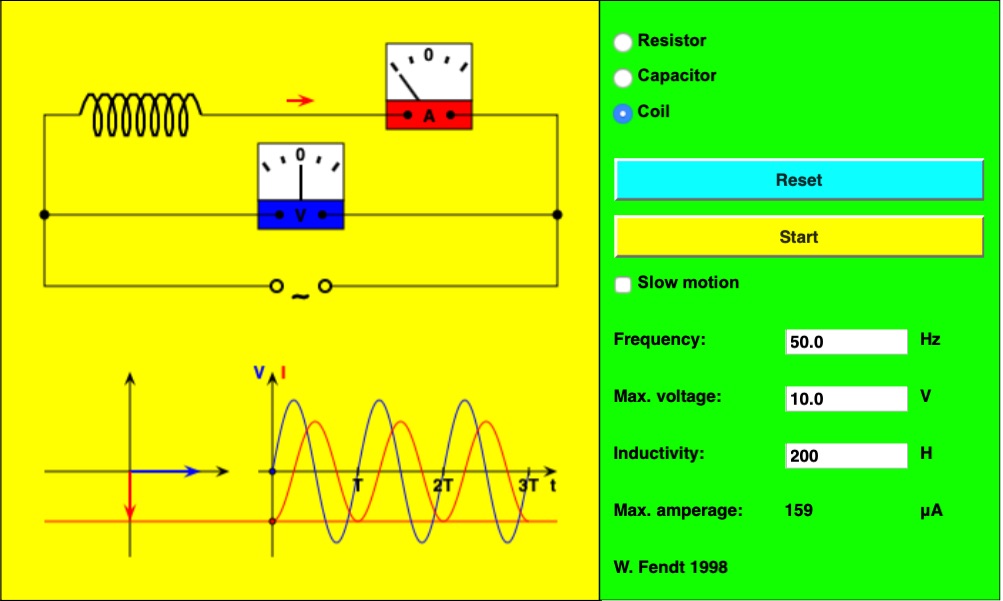 The rotating vectors at bottom left are called PHASORS; they keep track of where we are in each cycle, for I and V |
||||||||||
|
13 |
|
Lab 12 = Index of Refraction Read "The Story of Your Life" (esp. pp. 15-18, 20-24, for pre-lab discussion) |
For your practice: Ch16: 3, 4, 5, 6, 7, 8, 9, 10, 11, 13, 14, 25, 26, 27, 28, 29 Homework due Apr 4: Any 6 of these: Ch16: 71, 76, 77, 80, 84, 85, 88 For your practice: Ch16: 33, 36, 42, 46, 49, 50, 51, 56, 59, 61, 63, 64, 65, 67 Homework due Apr 6: Any 5 of these: Ch16: 90, 92, 93, 95, 96, 97, 98, 99, 101, 102 (Piazza discussion recommended) |
Driven Oscillator Coupled Oscillators |
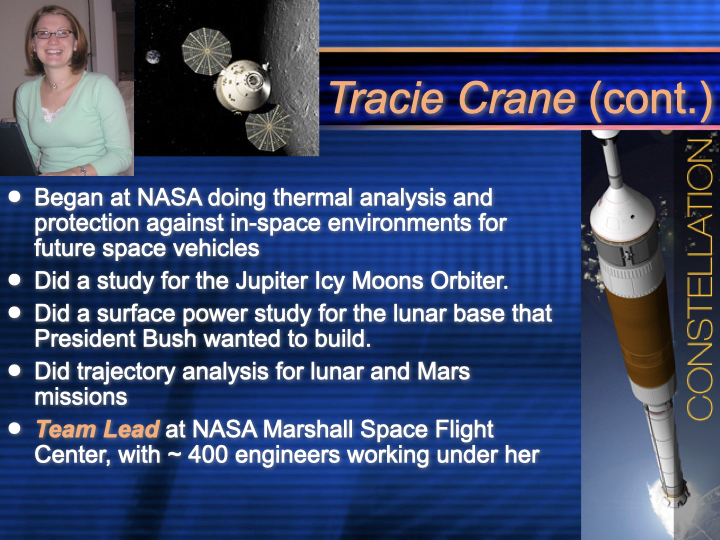
who has spent her career working with NASA How to see without glasses: |
||||||||||
|
14 |
|
Lab 13 = Geometric Optics |
Reminder: your FINAL problem-solving homework was due Apr 6: Any 5 of these: Ch16: 90, 92, 93, 95, 96, 97, 98, 99, 101, 102 (Piazza discussion recommended) Homework due Apr 11: Add 5 articles of interest to the shared folder with your name on it in our Zotero group (Discussion recommended: I am here to serve as your Agent!) |
Wave Motion Wave Addition |
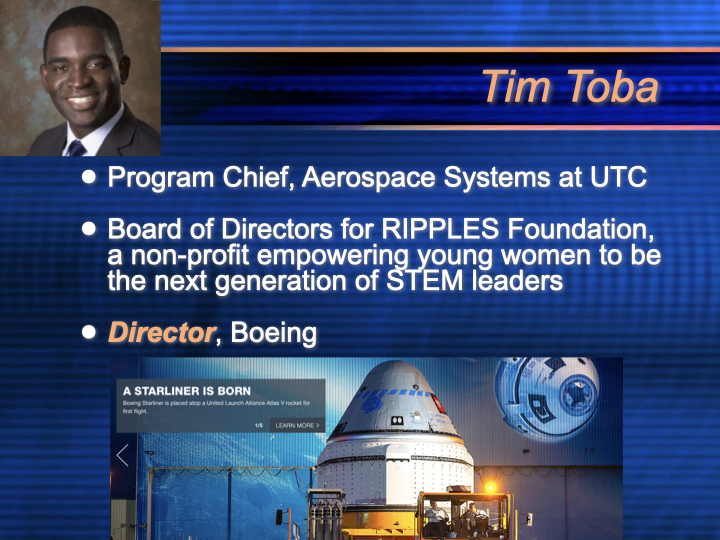
whose current title is Director, Boeing Avionics Sometimes, information carried by light appears to be lost: |
||||||||||
|
15 |
|
Diffraction, and then Interference (Add a line to your résumé: geometric optics, image formation, diffraction & interference) |
Try using Mathematica for simulating Diffraction |
Remember, Rolf Landauer put forth that all information is physical: I'm interested in ways to recover information that appears to be dissipated during transmission. Wanna play? If we are clever enough, there can be ways of recovering "lost" information: |
|||||||||||
|
16 |
|
Add polish to your lab notebook. Come to the lab for any work needed. |
Fun sites: ElectroBOOM How does electricity find the "Path of Least Resistance"? The Learning Circuit Scullcom Hobby Electronics Basic Electronics Digital Electronics Tutorials The Signal Path Open Tech Lab Element14 Presents Steve Mould |